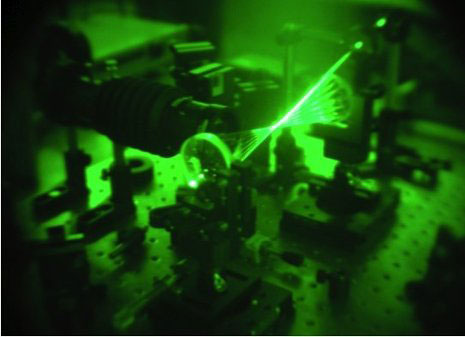 Michigan Technological University's Physics Department sees itself poised on the brink of greatness. Richard and Elizabeth Henes agree. Longtime and generous supporters of Michigan Tech, the couple has donated another $700,000 to the University to upgrade research facilities in Fisher Hall, including infrastructure improvements.
Michigan Technological University's Physics Department sees itself poised on the brink of greatness. Richard and Elizabeth Henes agree. Longtime and generous supporters of Michigan Tech, the couple has donated another $700,000 to the University to upgrade research facilities in Fisher Hall, including infrastructure improvements.
Oct 29th, 2010
Read more
Imagine a world where pacemakers never need new batteries and a walk through a park keeps your mp3 player at full charge. Dr. Yong Shi, Assistant Professor of Mechanical Engineering at Stevens Institute of Technology, is developing the technology to make those dreams a reality.
Oct 28th, 2010
Read more
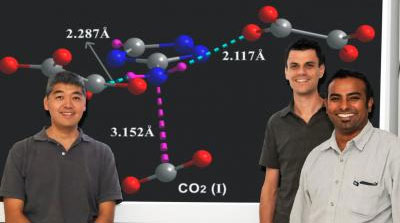 Researchers at the University of Calgary and University of Ottawa have provided deeper insights to CO2 capture by 'seeing' the exact sites where CO2 is held in a capture material.
Researchers at the University of Calgary and University of Ottawa have provided deeper insights to CO2 capture by 'seeing' the exact sites where CO2 is held in a capture material.
Oct 28th, 2010
Read more
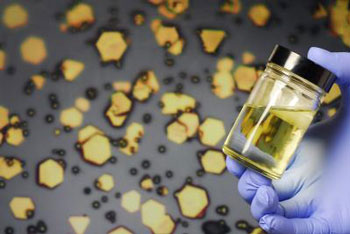 Researchers at the Georgia Institute of Technology have developed a new organic solvent process that may and open up new possibilities for using noble metals in cancer therapeutics, microelectronics and other applications.
Researchers at the Georgia Institute of Technology have developed a new organic solvent process that may and open up new possibilities for using noble metals in cancer therapeutics, microelectronics and other applications.
Oct 28th, 2010
Read more
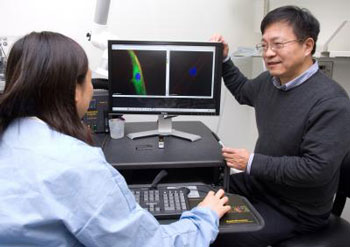 The Georgia Tech-led Nanomedicine Center for Nucleoprotein Machines has received an award of $16.1 million for five years as part of its renewal by the National Institutes of Health (NIH). The eight-institution research team plans to pursue development of a clinically viable gene correction technology for single-gene disorders and demonstrate the technology's efficacy with sickle cell disease.
The Georgia Tech-led Nanomedicine Center for Nucleoprotein Machines has received an award of $16.1 million for five years as part of its renewal by the National Institutes of Health (NIH). The eight-institution research team plans to pursue development of a clinically viable gene correction technology for single-gene disorders and demonstrate the technology's efficacy with sickle cell disease.
Oct 28th, 2010
Read more
The European Molecular Biology Organization (EMBO) today announced the recognition of outstanding research contributions by 63 life scientists from 14 countries. The researchers are awarded the life-long honour of EMBO membership, joining almost 1500 of the world's leading molecular biologists.
Oct 28th, 2010
Read more
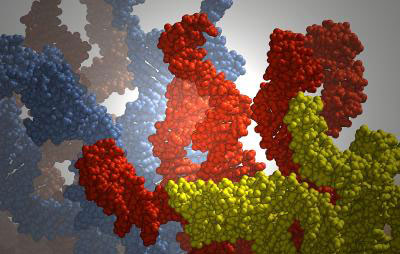 Researchers from North Carolina State University have found a way to optimize the development of DNA self-assembling materials, which hold promise for technologies ranging from drug delivery to molecular sensors. The key to the advance is the discovery of the 'Goldilocks' length for DNA strands used in self-assembly - not too long, not too short, but just right.
Researchers from North Carolina State University have found a way to optimize the development of DNA self-assembling materials, which hold promise for technologies ranging from drug delivery to molecular sensors. The key to the advance is the discovery of the 'Goldilocks' length for DNA strands used in self-assembly - not too long, not too short, but just right.
Oct 28th, 2010
Read more
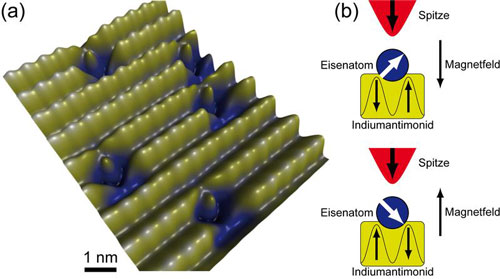 Wie die Zeitschrift Nature in der Ausgabe vom 28.10.2010 berichtet, zeigt die Hamburger Forschergruppe von Prof. Wiesendanger erstmals, dass im Labor einzelne Quantenbits in einem Halbleiter nun auch elektrisch adressiert werden koennen.
Wie die Zeitschrift Nature in der Ausgabe vom 28.10.2010 berichtet, zeigt die Hamburger Forschergruppe von Prof. Wiesendanger erstmals, dass im Labor einzelne Quantenbits in einem Halbleiter nun auch elektrisch adressiert werden koennen.
Oct 28th, 2010
Read more
Materials scientists at the Saarland University and the Material Engineering Center Saarland have come up with a laser technology that allows for precise working on materials' surfaces. The laser beams generate 3-dimensional patterns and change the material's inner structure only at an extremely thin surface layer.
Oct 28th, 2010
Read more
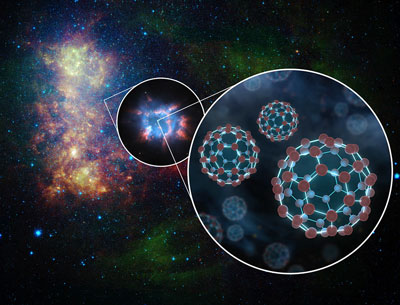 Astronomers have discovered bucket loads of buckyballs in space. They used NASA's Spitzer Space Telescope to find the little carbon spheres throughout our Milky Way galaxy - in the space between stars and around three dying stars. What's more, Spitzer detected buckyballs around a fourth dying star in a nearby galaxy in staggering quantities - the equivalent in mass to about 15 of our moons.
Astronomers have discovered bucket loads of buckyballs in space. They used NASA's Spitzer Space Telescope to find the little carbon spheres throughout our Milky Way galaxy - in the space between stars and around three dying stars. What's more, Spitzer detected buckyballs around a fourth dying star in a nearby galaxy in staggering quantities - the equivalent in mass to about 15 of our moons.
Oct 27th, 2010
Read more
Scientists are reporting development of a new approach for dealing with offensive household and other odors - one that doesn't simply mask odors like today's room fresheners, but eliminates them at the source.
Oct 27th, 2010
Read more
 Today, Ecole Polytechnique Federale de Lausanne and IBM (NYSE: IBM) announced a major research initiative, with several leading academic and corporate research organizations across Europe, to address the alarming growth of energy consumption by electronic devices, ranging from mobile phones to laptops to televisions to supercomputers.
Today, Ecole Polytechnique Federale de Lausanne and IBM (NYSE: IBM) announced a major research initiative, with several leading academic and corporate research organizations across Europe, to address the alarming growth of energy consumption by electronic devices, ranging from mobile phones to laptops to televisions to supercomputers.
Oct 27th, 2010
Read more
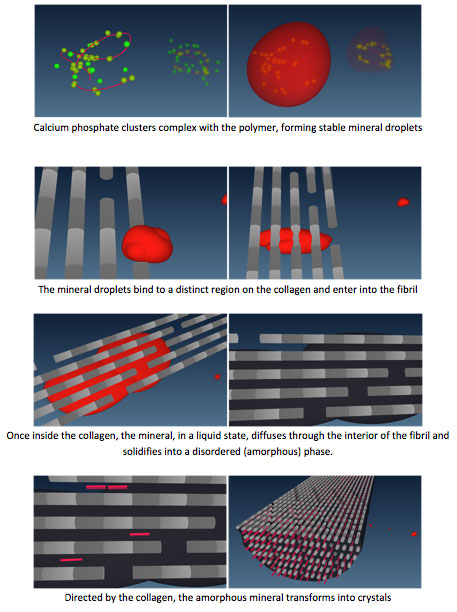 Researchers at Eindhoven University of Technology have for the first time succeeded in mimicking the process of bone formation in the laboratory, and in visualizing the process in great detail.
Researchers at Eindhoven University of Technology have for the first time succeeded in mimicking the process of bone formation in the laboratory, and in visualizing the process in great detail.
Oct 27th, 2010
Read more
 To protect art objects for generations to come, scientists from the A. James Clark School of Engineering at the University of Maryland, College Park, have teamed up with conservators from the Walters Art Museum in Baltimore, Md., to develop and test a new, high-tech way to protect silver art objects and artifacts, using coatings that are mere nanometers thick.
To protect art objects for generations to come, scientists from the A. James Clark School of Engineering at the University of Maryland, College Park, have teamed up with conservators from the Walters Art Museum in Baltimore, Md., to develop and test a new, high-tech way to protect silver art objects and artifacts, using coatings that are mere nanometers thick.
Oct 27th, 2010
Read more
The use of nanotechnology in medicine holds the potential to essentially improve diagnosis, treatment and monitoring of disease activity. To foster research in this area, the European Commission is funding the collaborative project 'Development of Novel Nanotechnology Based Diagnosed Systems for Rheumatoid Arthritis and Osteoarthritis (NanoDiaRA)' within the 7th Framework Programme for Research.
Oct 27th, 2010
Read more
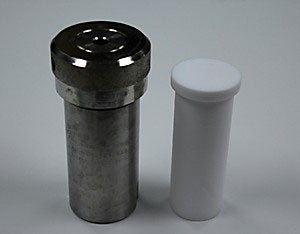 Hydrothermal synthesis offers an easier route to lead-free piezoelectric materials.
Hydrothermal synthesis offers an easier route to lead-free piezoelectric materials.
Oct 27th, 2010
Read more
 Michigan Technological University's Physics Department sees itself poised on the brink of greatness. Richard and Elizabeth Henes agree. Longtime and generous supporters of Michigan Tech, the couple has donated another $700,000 to the University to upgrade research facilities in Fisher Hall, including infrastructure improvements.
Michigan Technological University's Physics Department sees itself poised on the brink of greatness. Richard and Elizabeth Henes agree. Longtime and generous supporters of Michigan Tech, the couple has donated another $700,000 to the University to upgrade research facilities in Fisher Hall, including infrastructure improvements. 










 Subscribe to our Nanotechnology News feed
Subscribe to our Nanotechnology News feed